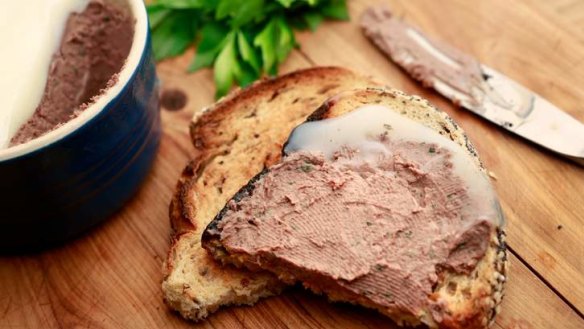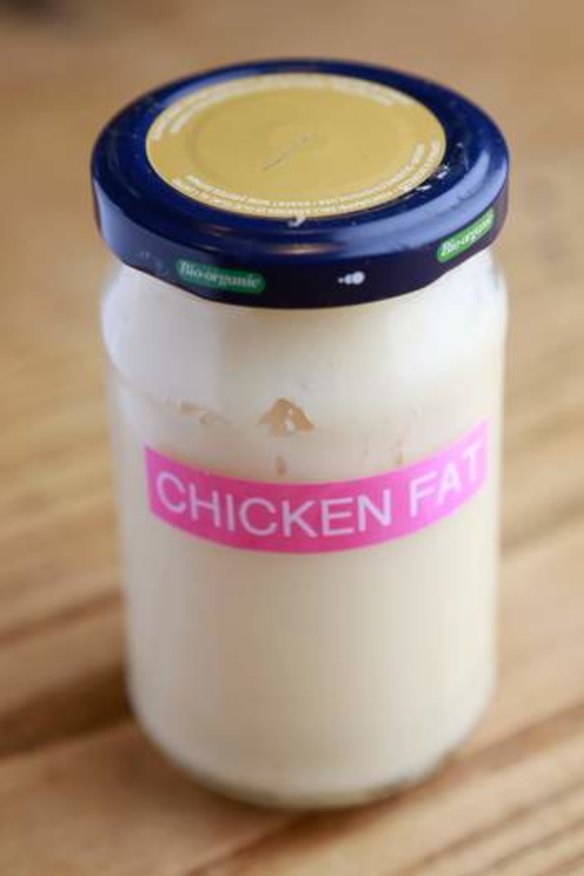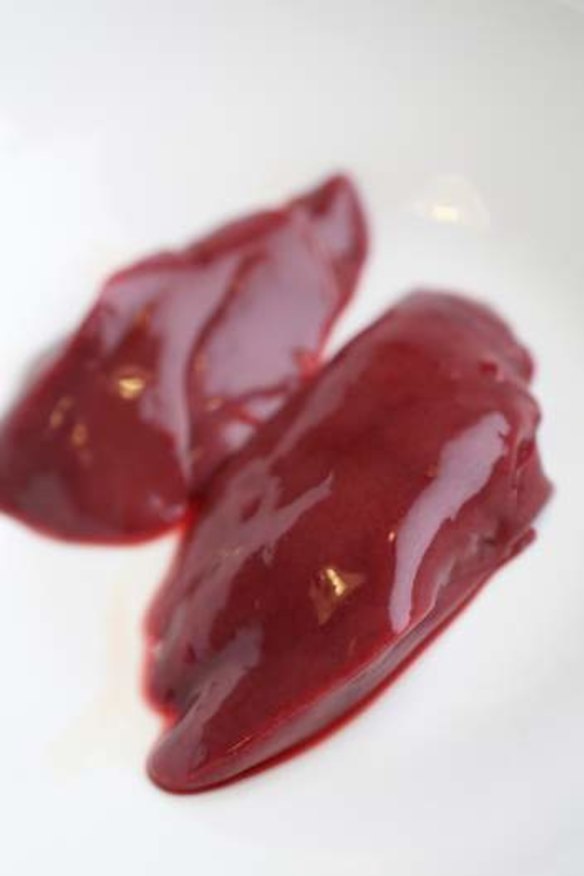From cakes to chicken liver pate: common cravings while breastfeeding
Arabella Forge makes chicken liver pate.

After the birth of my first child I developed a craving for chicken liver pate. Some women reach for cakes and other sweets in those sleep-deprived weeks but my body was screaming out for a satisfying and nutrient-dense food.
It’s well known that breastfeeding women have higher energy requirements – more than 2000kJ/day compared to average intake recommendations for women. They also require an increased intake of certain nutrients such as calcium, iron, zinc, B vitamins and vitamin A.
Both my mother and my grandmother both indulged in plentiful pate while breastfeeding. Its main ingredient is liver – an organ meat rich in protein, folate, vitamin A and B12, and also contains up to three times the amount of iron as beef steak.
I was looking for the real stuff that was creamy and rich, with a voluptuously satisfying mouth feel. But finding a good pate was no easy task.

At the time, I was faced with the option of buying an expensive pre-made gourmet pot from a local food shop ($16 a jar, thank you very much!) or a strongly alcoholic variety that contained any number of preservatives and thickeners from the supermarket.
So I decided to make it myself. In between erratic patterns of sleep deprivation and breastfeeding, it came to be one of the most satisfying and worthwhile pursuits.
Now, whenever a girlfriend has a baby it's my go-to foodie gift.

Pate is one of those special dishes that can magically blend cheap and humble ingredients into something luxurious and decadent. It's quick to prepare and can last in your fridge for a week. It's also perfect for a decadent last-minute snack, and can make a nourishing meal if you are also juggling a baby on your hip.
Traditional recipes were based on a meat-to-fat ratio of 2:1, the fat being the schmaltz (or chicken fat) in Jewish recipes, and butter or cream in the French. The more basic peasant-style recipes required only ground meat off-cuts, flavoured with tidbits of pork fat or bacon.
With this in mind, you can see why the varieties sold at supermarkets differ so much. Containing hydrogenated vegetable oils, gelatin, soy protein, emulsifiers, flavour enhancers and thickeners, these ingredients seek to imitate the luxurious mouth feel of traditional components but just don't hit the mark.
The key ingredient for a good pate is liver. I admit, it's one of those ingredients that can quickly become a dampener for dinner party conversation. If you tell your guests they are chomping through a sheep's leg, they won't bat an eyelid but if you tell them there is a liver on the table they might leave.
Liver is one of the most undervalued but nutrient-dense organ meats. It's high in protein and folate, is one of the best sources of iron and also high in vitamins A, B and C. It's also very cheap. If you have a limited budget for meat, it is a deliciously frugal and nutrient-dense cut.
If you pluck your own birds, obtaining chicken liver is simply a matter of setting them aside in the freezer until you have enough (about 500 grams is required).
Otherwise, ask your butcher for liver but make sure it is from genuine free-range birds. Toxins can accumulate in the liver so it is important the birds have had a natural, free-range diet with minimal exposure to farming chemicals.
It's imperative that the liver is truly fresh. It should be a dark pink colour and shiny, with no grey bits or discolouration. Green bits (from the gall bladder) need to be removed as they will add a bitter flavour. Within a few days liver will start to smell and develop a strong flavour. This is not harmful but the taste won't be as good.
Pate can be made using a variety of techniques. The traditional Jewish method involves chopping cooked livers into a paste and adding onions, eggs and schmaltz with only salt and pepper as flavouring.
The French method relies heavily on butter and cream, with a variety of spices. It can also be baked in a crust, in which case it is called pate en croute.
Foie gras is the most luxurious – and notorious – type of pate made from fattened duck and goose livers from birds, which have been force fed a rich, fat-gaining diet – plump summer figs were a favourite during Roman times.
Anthony Bourdain is said to be a devoted fan and the Duchess of Cambridge apparently indulges in it regularly.
But varieties and cooking methods aside, humble, home-made pate is about putting together a few simple components to make good food stretch further. The offcuts and unloved ingredients combine to create something delicious.
Leek and butter pate
Cooking time: 10 minutes
Refrigeration time: minimum 1 hour
Ingredients
1 small leek, finely sliced
200g butter, roughly chopped into cubes
50g chicken fat or butter, for frying
500g fresh pasture-raised chicken livers (about 2 cups) cut into 1cm pieces.
1/3 clove nutmeg, finely grated
1/4 cup brandy
1 generous bunch curly-leaf parsley, coarsely chopped
salt and pepper to taste
Method
1. To clean the livers, use a small sharp knife to remove and discard any white sinew. Trim any greenish patches.
2. Cook the leek on a low heat with 50g of butter or fat. Stir regularly with a wooden spoon, and remove from heat when it turns a golden colour. Set aside.
3. Place the brandy and liver next to the stovetop ready for cooking. Place a large frypan on a high heat and add the liver, follow with the brandy and light it with a match. It should set off a flame over the meat. Shake the pan until the flame dies down (about 5 - 10 seconds).
When the liver is 90 per cent cooked (it may still have a slightly pink centre), remove it from the pan. This should take one-two minutes. It's important that the livers don't overcook. If the livers are fully-brown it means they are overcooked, and could taste rubbery. Place livers on a large plate and allow to cool to room temperature.
4. In a food processor, combine the leek, liver and remaining ingredients. Process at a high speed so that the mixture becomes a fine paste. Season to taste.
5. Transfer mixture to sterilised glass jars. To prevent oxidation on the top of the meat, add some chicken fat as an interior seal. Refrigerate immediately.
Makes: 4 x 200ml jars
What did your body crave while you were breastfeeding?
The best recipes from Australia's leading chefs straight to your inbox.
Sign up